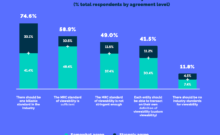Ad fraud technology is helpful until it isn’t. Many publishers, brands, and agencies work with multiple solution-providers, which gets pricy, frustrating and even confusing. Their laundry list of grievances includes sizable data discrepancies between solution-providers, outlandish pricing, and network infrastructure shortcomings. All of these problems are solvable. They require solution-providers to stop pouring money into marketing activities and instead invest in their product. They also require the industry to band together to define ad fraud measurement standards and rethink MRC accreditation.
When I ask agencies why they use multiple ad fraud solutions, they usually tell me it is because their clients demand it. One brand prefers Solution A while another wants Solution B, so the agency is forced to invest in both. That is not the real reason. Most of these solutions work well when they are judged by themselves. But if there is a superior tool, why would you need more than one. What their clients are actually saying is that the agency’s data needs to line up with theirs. A client wouldn’t care what tool the agency used as long as it effectively eliminated fraud, based on the client’s preferred metrics.
Because there are no ad fraud measurement standards, every brand has a different definition of fraudulent traffic. There are sizable data discrepancies between ad fraud solution-providers—as much as 30% to 40%, according to IAB. Thus, brands and agencies are forced to shop around in search of the tool that best lines up with their metrics. It is as if a brand is wearing rose-colored glasses and expects its vendor to have that same view of things. Everyone is happy because the numbers look good, but the problem is fraudsters know how to make the world look rose-colored.
Then another brand comes along and tells the agency it sees the world through a different filter. Now, the agency needs a solution that lines up with this new viewpoint. It is forced to invest in another ad fraud solution that aligns with these modern metrics.
Read More at The Original Article: www.econtentmag.com









